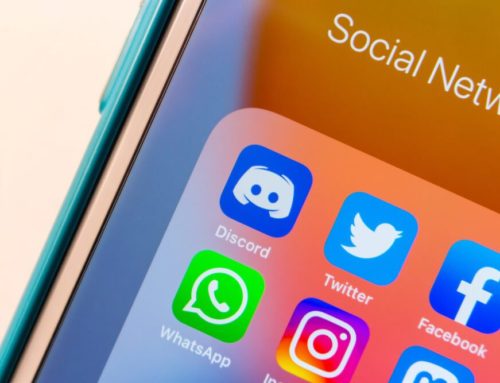Since the birth of the internet, the cell phone, and the computer, we’ve seen new elements of language emerge, including GIFs, emojis, online video, voice commands, haptic responses, chatbots and dozens of other forms of communication.
SOFTWARE IS EATING OUR WORDS:
By 2022 there will be more than 6 billion digitally connected citizens, 10 billion connected devices, millions of autonomous chatbots, trillions of sensors and networks so fast that communication will happen faster than humans can process a single thought.
Communication is defined as the imparting or exchanging of information or news and language is a system of communication and so whether we are communicating verbally in writing or using photos and videos, in the future our words will be mediated and modified by technology.
And so as software advances and as the proliferation of technology impacts more people on the planet we believe one of the most important questions to ask is what will this mean for the future of language and human communication?
5 EMERGING TRENDS:
To understand this at a more macro level, here are five social media trends that help us understand the importance of this question:
- Video viewership is exploding, with Snapchat, Instagram and Facebook Live leading the way. Video formats are also changing and so as a medium expect some huge shifts in form and function.
- Messaging is dominated by Facebook and WeChat, it’s growing rapidly, and evolving from simple text communication to become our new home screen with options for vivid self-expression and commerce.
- Rise of voice interfaces because they’re fast, easy, personalized, hands-free, and cheap, with Google on Android now seeing 20% of searches from voice, and Amazon Echo sales growing as iPhone sales slow
- Rise of machine assisted communications, including Facebook’s Messenger app and new API for developers. Includes chat based commerce, customer support and mobile payments. In 2017 we might see the first friend-bots where people become attached the bots they interact with each day.
- New layers of immersion and new fields of reality never experienced before via AR and VR, which impacts how we communicate, how we play games, watch films and interact with doctors, teachers and how we travel the world.
NEW ELEMENTS OF LANGUAGE:
With each of these advances we’re seeing “new elements of language” emerge:
- GIFs
- emojis
- online video
- voice commands
- geo filters
- haptic responses
- chatbots
These elements are helping us express and communicate in ways we’ve never been able to before. Today we can react to something on Facebook with an emoji, interact with chatbots as if we were having a conversation with a customer service agent. We can delegate the arduous back and forth of setting up a meeting via email to a human-assisted a.i and we can order an Uber or change a song on Spotify by giving verbal commands to a box in our living room.
As elements of language evolve and morph into something new, we inevitably become more reliant on the technology that enables them. It is this reliance which will have the greatest impact on how we function as humans day-to-day, which, in the context of what this means for business, raises an important question: will businesses and organizations connect with customers and community members more effectively if humans were taken out of the equation?










